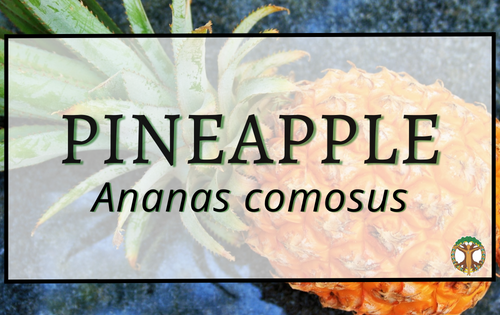
Pond Apple
Latin Name: Annona glabra
Common Names: Pond apple, alligator apple, cachiman cochon, monkey apple, dog apple, corkwood, palo bobo, mangrove annona, bobwood
Family: Annonaceae
Habitat: Pond apple is the only Florida native Annona species and it thrives in wetland environments. In addition to Florida, it is also native to the Caribbean, tropical Central and South America and West Africa. It was also introduced to Australia and Sri Lanka, where it has become extremely invasive. In Florida, it is commonly found in the Everglades as well as other southern coastal areas and can tolerate both fresh and saltwater.
Pond apple can grow up to 10 meters tall and is semi-deciduous. The leaves are alternating along the branches and are acute at the tip, measuring about 3-6 inches long and 1.5-2.5 inches wide. The flowers are white to yellow and are about 1 inch long with 3 outer petals and 3 inner petals. Trees can fruit after 2 years and produce a large, mango-sized fruit, similar in appearance to a custard apple, that turns yellowish when ripe. The fruit contains around 100 small light yellow-brown seeds and is eaten by various wildlife like alligators, hogs, raccoons, squirrels, and birds. While edible, the fruit isn’t typically grown as a fruit tree as it isn’t very sweet, though it can be enjoyed as a beverage or jam.
Parts Used: seeds, bark, leaves and fruit
History/Tradition: One of the more common uses of pond apple is to make a syrup from the boiled fruit to treat cough from tuberculosis, as well as other lung and chest issues. A tea made from the leaves has been drunk to provide relief from abdominal cramps, colic, diarrhea, and dysentery. The tea has also been used as a vermifuge to treat hookworms. There is some evidence that teas made from annonas can cause symptoms that resemble Parkinson’s disease, so caution should always be used when consuming any part of this plant.
Indications: Used in large doses, many of the constituents within the pond apple are considered poisons. Studies have shown that some of its chemical constituents are known to inhibit cancer cell growth, especially with leukemia cell lines, and have found there is great potential in the future study of this plant.
Systems: respiratory, digestive
Actions: emetic, vermifuge, anti-cancer
Cautions: Seeds are NOT EDIBLE and are POISONOUS. Be careful to wash your hands well after handling seeds as they have been known to cause blindness. Seeds have been used to poison fish.
Constituents: acetogenins, apomorphine alkaloids, cyclopeptides, diterpenoids, phenylpropanoid, reticuline
Culinary Use: The ripe fruit, which has a sweet scent and has been described to taste like honeydew melon and menthol mango/melon, though most folks do not seem to enjoy it. Green Deane’s description may not entice many as he describes it as “musky, subacid, resinous flavor, not desirable.”
Other Uses: The soft wood of pond apple is likened to cork and has been used as corks for bottles, as well as for making rafts, fishing pole floats, small boxes and other small wooden products. The seeds have been used to poison fish, and both the seeds and leaves are considered insecticidal and have been used to kill lice in the nests of chickens.
References:
Florida Ethnobotany by Daniel F. Austin. 2004. CRC Press.
https://edis.ifas.ufl.edu/publication/HS1281
https://www.eattheweeds.com/tag/pond-apple
https://ar.iiarjournals.org/content/anticanres/28/2A/965.full.pdf
Written by Jaime Pawelek






